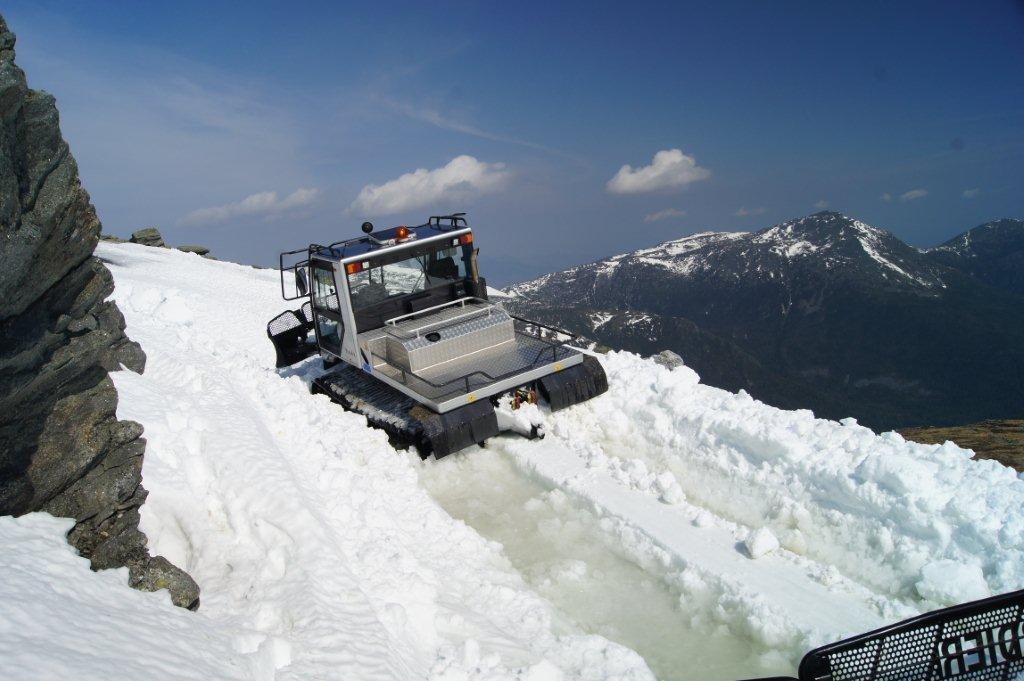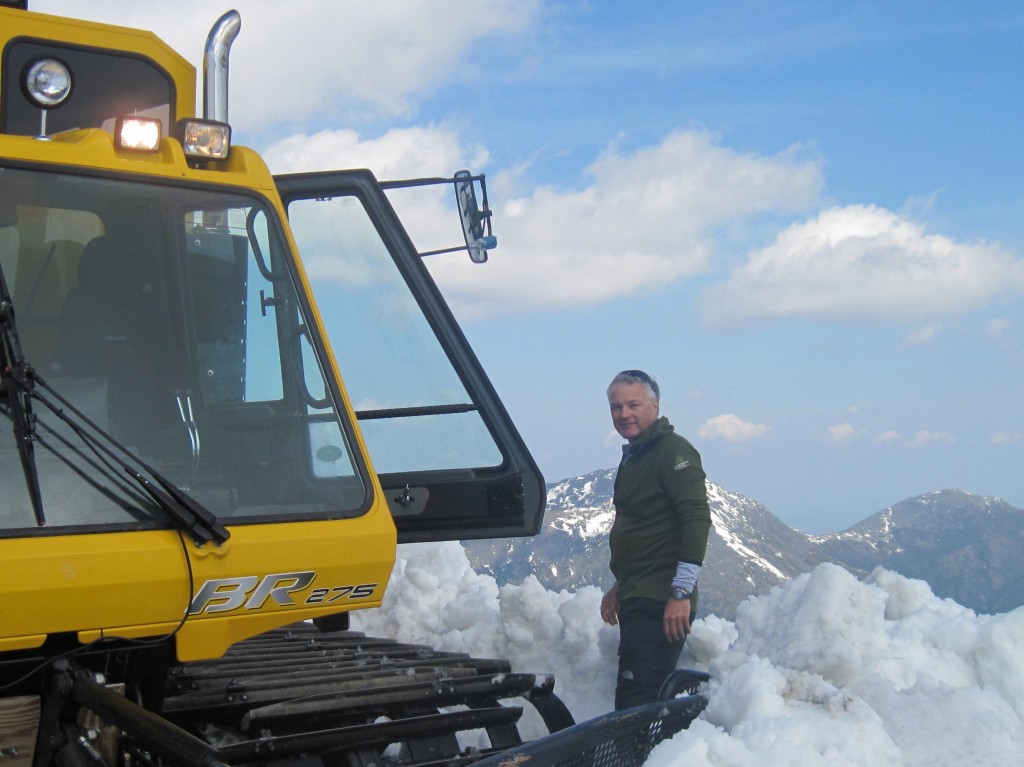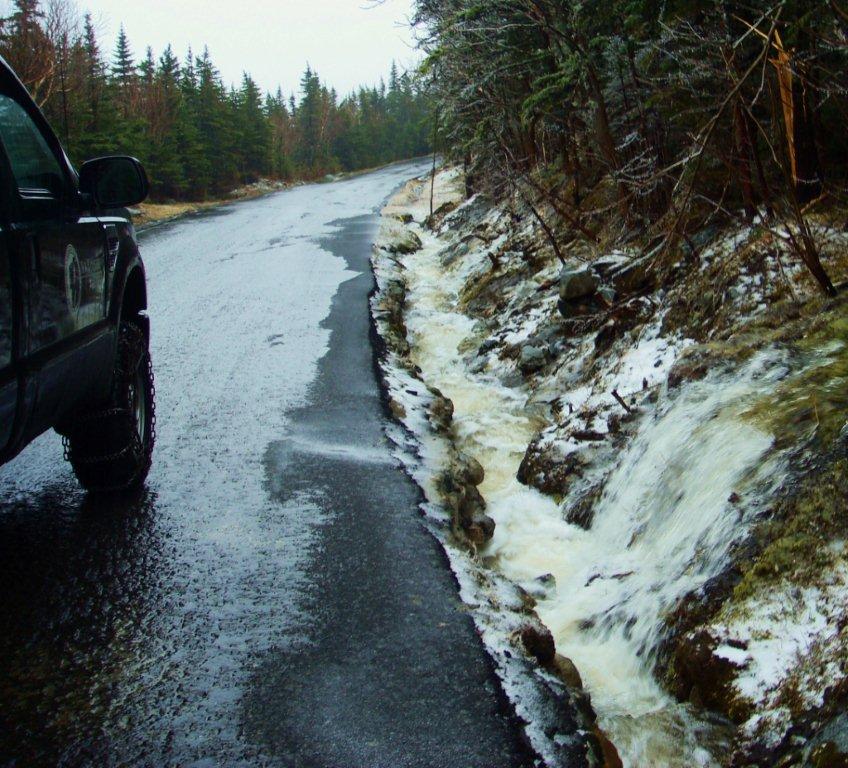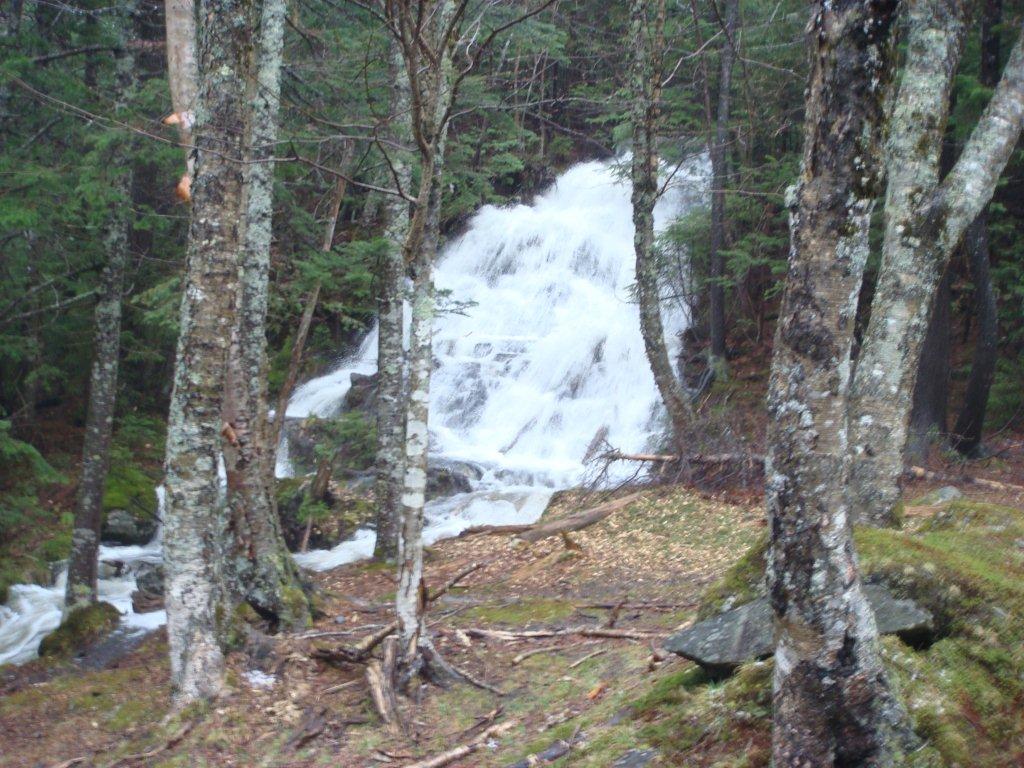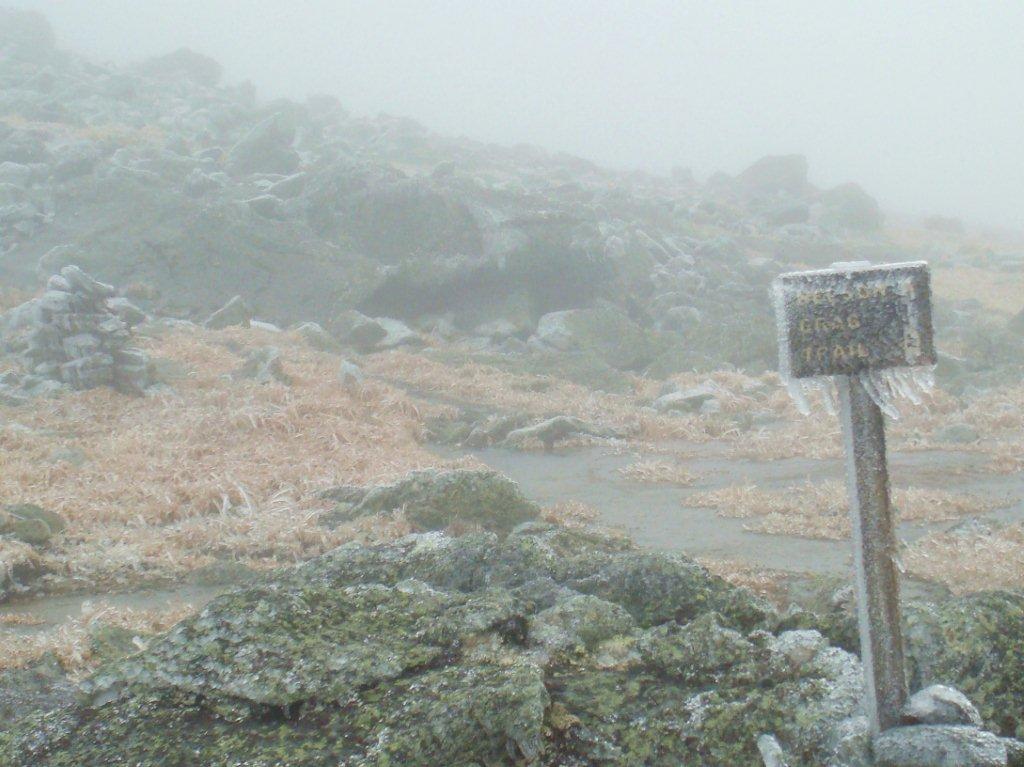Last week summit crews helped remove slush and snow from the upper sections of the Auto Road. Getting the slush pockets off the road helps us not only from getting stuck
but we can switch back to trucks for transport instead of more expensive to operate snowcats. A first for me was plowing the last of the winter snow off the “Cragway” a section of road that sometimes hold over 20′ of snow, but not this year.
One of the hardest “jobs” in opening the Mt Washington Auto Road to the summit each spring is steaming the ice from dozens of frozen culvert pipes under the auto road. These culverts especially along the gravel sections of the road, if left plugged with ice can cause massive washouts. Auto Road Foreman John Gardner and his crew work long and hard to clear these culverts before a big rain occurs.
Today after almost 2″ of rain the culverts are working to their water carrying capacity. Some gravel erosion is occurring but nothing is out of control thanks to those open culverts and ditches.
All this water coming down the east side of the mountain joins together at the floor of Pinkham Notch to form the Ellis River with the famous Glen Ellis Falls this morning putting on a spectacular display!
As the temperatures on the summit slowly drops the rain has changed to freezing rain mixing with a little wet snow.
The combination of freezing rain and high winds sets a perfect stage for unprepared hikers to suffer mountain hypothermia. In these conditions one can cool as rapidly as being immersed in a near freezing lake, ocean or stream which takes only minutes once an exhausted body becomes incapable of fully metabolizing stored energy and shiver hard enough to produce the heat needed to keep the bodies temperature at its optimum 98.6F. Beware, being forewarned is being forearmed. No matter how one is well experienced in the mountains hiking alone can be big trouble when weather turns bad. This hiker for example has lots of experience but nevertheless ended up over her head and needed to call for help. The expense NH Fish & Game incurs is high even though there are volunteer SAR groups helping to keep costs down. Unfortunately in the United States it’s too easy to “sue” which can cost a state agency lots more if they don’t pony up all their resources when a rescue call comes in. This lady was hiking alone in winter above the treeline in bad weather and got lost. Thankfully, she came out of it okay. Somehow NH hikers need to pay in a little annual fee to help fund SAR just as we pay a little out of our monthly phone bill to support our state’s 911 notification system.
Over the weekend I had the pleasure and honor to partake in an advanced firefighting training camp conducted at the NH Fire Academy in Concord with students for the Berlin Firefighter II Class. We didn’t have to worry about the cold but had to contend with lots of heat! The skills learned from these drills, in a controlled environment, will help us all be better and safer firefighters when faced with similar situations. I’ll use these skills not only with the Gorham Fire Department where I’m a volunteer, but also at Mt Washington State Park. Being located at the top of the mountain there is no easy access for a fire department with big fire trucks to respond. Having park staff cross trained as firefighters helps us protect lives and valuable property at the summit. After the devastating Power House Fire in 2003 it became painfully apparent for the need of state employees to continue winter care taking of summit utilities in addition to the regular summer season. We need to discover and extinguish a fire early on in its development stage, like a simple waste basket fire before it gets out of hand. We now have some old donated personal protective clothing (PPE) and fairly good self-contained breathing apparatus (SCBA). We have about 100 handheld fire extinguishers of various sizes and types strategically placed in all the summit buildings to help us do this rare but extremely important job. Here is a short clip of just a couple of the fire suppression techniques practiced at the NH Fire Academy.
We are blessed that in NH we have such a marvelous Firefighter training facility as the Department of Safety, NH Fire Academy in Concord, NH. The next best thing, which is in the works, is to get a North Country Fire Academy annex in Bethlehem so Coos and Grafton County Firefighters can save the travel time and be able to attend more of these firefighter classes.

